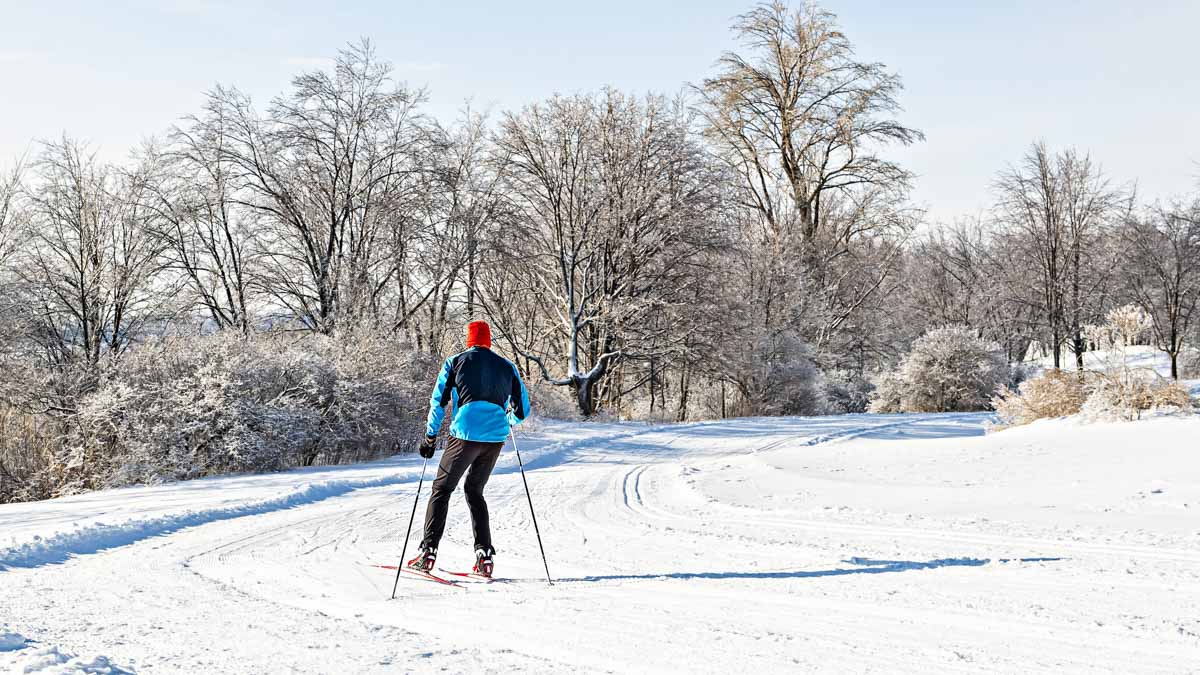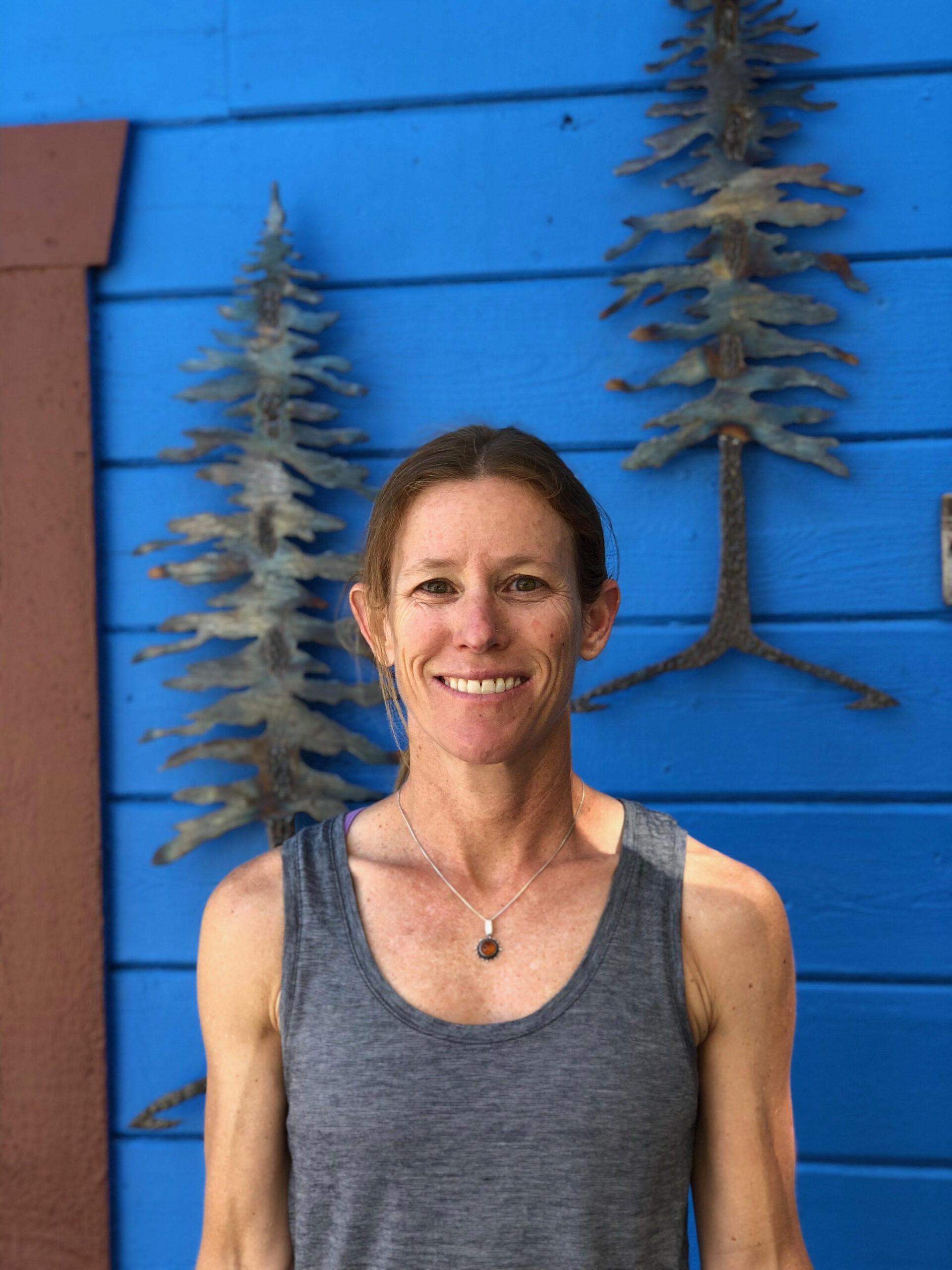Challenge breeds opportunity. Our current global climate requires coaches get creative—exploring new training modes with our athletes, helping them expand their athletic identity and embracing a deeper sense of themselves.
Winter time also presents challenges for training athletes: colder temperatures, shorter days, holiday indulgence and traditionally a time of year with fewer races. How do we as coaches keep our athletes engaged, training outside and feeling fit during the transition season?
Welcome to the world of Nordic skiing!
Part 1: Why You Should Incorporate Nordic Skiing into an Athlete’s Transition Season
Build the VO2Max Power House
Full-body Muscle Recruitment: Nordic skiing develops the aerobic system like no other sport. It’s been said if you chew gum while Nordic skiing you’ll be sure to use EVERY single muscle in your body. “Cross country skiing uses a large percentage of your muscle mass, and is more efficient and effective than activities using legs alone or arms alone,” says Randy Clark, exercise laboratory manager of University of Wisconsin Health’s Pediatric Fitness Clinic and a Birkebeiner competitor. The “Birkie” is Wisconsin’s legendary cross country ski race measuring 55km. (1)
Logging Record Fitness: Nordic skiers are consistently among the top VO2Max scorers in the world. The aerobic demand of Nordic skiing is so high due to that full body recruitment. In 2012, Norwegian cyclist Oskar Svendsen took the record away from World Cup Olympian and the most decorated Nordic skier Bjorn Daehlie who had held it since the 1990s. Svendsen’s VO2Max measured at 97.5 mL/(kg·min) when he was just 18! Daehlie now ties for second place with fellow Nord and Nordic skier Epson Harald at 96 mL/(kg·min).
Female Norwegian Nordic Skiers Bente Skari (74 mL/(kg·min) and Marit Bjorgen (72 mL/(kg·min) are the 2nd and 3rd females to 1984 Olympic marathon winner Joan Benoit, who still holds the record at 78.6 mL/(kg·min). Bjorgen notably holds the record for both male and female for the most Olympic medals ever won (15) in the Winter games. (2)(3)(4)(5)(6)
Develop Movement, Skill and Strength
Balance: The ski surface area of a Nordic ski, especially track race skis designed for groomed trails, is narrow, typically 40-44mm wide. Balance is a key component to skiing. Whether skating or classic skiing (also called striding), single-leg balance on a moving object is required. This consistent transfer-of-balance training benefits athletes by improving reaction time and strengthening stabilizers.
Multi-Planar Movement: There are two types of cross country ski disciplines: classic, also called diagonal stride, and skate skiing. During the diagonal stride, skis slide forward and during skate skiing, skis move laterally. Both techniques intensely train balance and challenge the athlete to move or resist movement in all 3 planes: sagittal (forward/back), frontal (side-to-side) and transverse (rotation). This multi-planar movement benefits athletes whose primary sport requires them to move predominantly in the sagittal plane. This is because skiing develops more advanced core strength, muscular balance and movement range.
Technique: Body position over the weighted foot is foundational to optimal ski balance and propulsion. Spatial awareness along with the coordination of the upper and lower body action develops advanced movement patterns that enhance other sport practices.
Part 2: How to Get Started
Rent: Your athlete should start with heavy, wide, stable skis. There is a giant learning curve to balancing on a moving object that is only centimeters wide. They should also always try before they buy. Once they’re comfortable on skinny skis, they should keep renting progressively lighter and skinnier skis until they find their desired weight and size. Just like a high-end carbon fiber bike with excellent components, they’ll feel the difference.
Take a Lesson: This is one of the most technical sports. Even though most people can manage to shuffle around on the snow, your athlete will receive the most benefit from learning solid technique to achieve actual kick and glide. There are masters clinics and group workouts available in most cross country ski areas but they’ll need to be proficient on skis before joining.
Preparation: Here are a few great ways your athletes can prepare themselves before trying cross-country skiing or reacquainting themselves with the movements required if they haven’t been on skis for a while:
- Balance:
- Prescribe balance exercises for your athletes such as standing one leg while brushing their teeth.
- Incorporate single-leg exercises into their strength workout: Single-Leg Squat and Single Deadlift Touchdowns are great practice for balancing on the front gliding ski.
- Incorporate destabilizing devices such as a foam pad, bosu or balance disk to create added challenge and better prepare them for sliding on skis.
- Encourage barefoot balance work as tolerated to help simulate skiing’s high demands on the foot muscles.
- Specific Strength:
- Hip flexors get a workout while skiing. Give your athletes resisted hip flexor exercises such as banded knee drives.
- Hip extension is also key, so deficit lunges, step-ups, deadlifts and bridges are great exercises that focus on gluteal strength.
- Using the ski poles enhances forward motion for Nordic skiing so upper body strength is essential. Straight-arm pull-downs and tricep extensions best mimic the movement of the arms.
- Cross country skiing is an explosive movement; the athlete is actually hopping from one ski to the next. Therefore, plyometric training such as single-leg hops forward and side-to-side will prepare your athletes for this power component of the sport.
Sources
- https://www.uwhealth.org/health-wellness/top-10-reasons-cross-country-skiing-is-good-for-you/44929, Top 10 Reasons Cross Country Skiing is Good for You, University of Wisconsin Health, Date Published: 01/13/2015
- https://www.vismaskiclassics.com/news/articles/vo2-max-the-magic-proof-of-endurance-power/ VO2 MAX – THE MAGIC PROOF OF ENDURANCE POWER, 12/14/2018
- https://www.topendsports.com/testing/records/vo2max.htm, Highest VO2max records.
- (4)https://www.ncbi.nlm.nih.gov/pmc/articles/PMC5642331/ The Physiological Capacity of the World’s Highest Ranked Female Cross-country Skiers, Med Sci Sports Exerc. 2016 Jun; 48(6): 1091–1100.
Published online 2016 May 16. doi: 10.1249/MSS.0000000000000862
PMCID: PMC5642331 PMID: 26741124, - Tom Rogers, https://www.norwegianamerican.com/the-fittest-of-them-all-endurance-athletes/ Feb 2014
- Wikipedia, Bjorn Daehlie/ Marit Bjorgen
Rossignol, https://www.rossignol.com/us/rossignol-nordic/rossignol-nordic-skis-equipment.html?gc_typesb2c=2161&price=655.00-800.00,149.00-800.00


